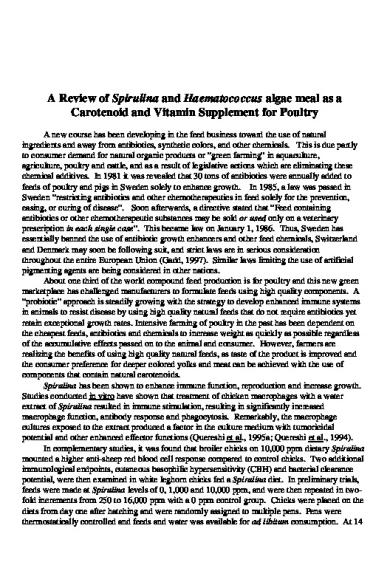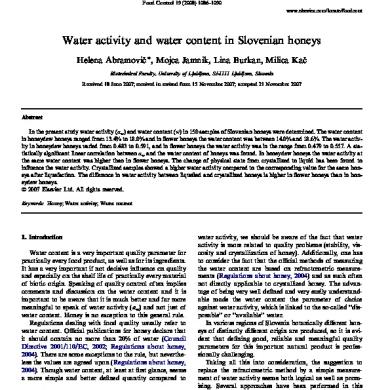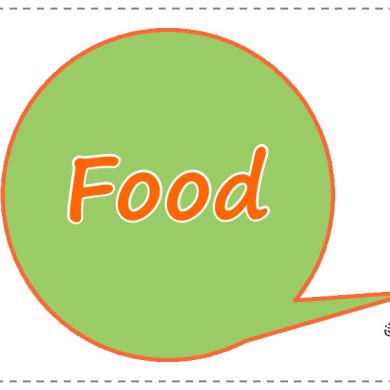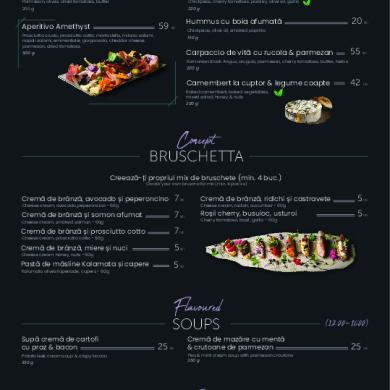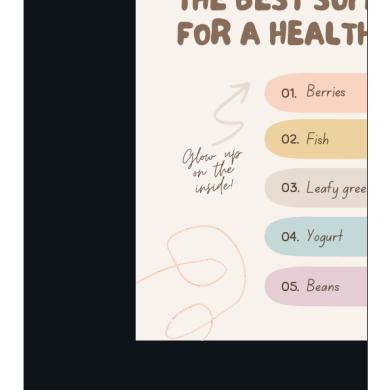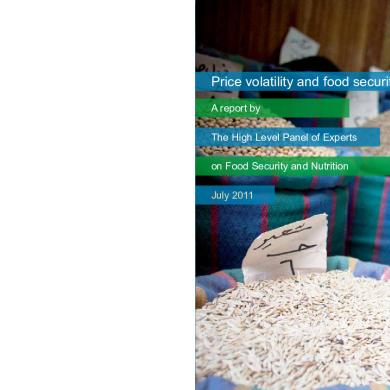A Review of Spirulina and Haematococcus algae meal as a Carotenoid and Vitamin Supplement for Poultry A new course has been developing in the feed business toward the use of natural ingredients and away from antibiotics, synthetic colors, and other chemicals. This is due partly to consumer demand for natural organic products or “green farming” in aquaculture, agriculture, poultry and cattle, and as a result of legislative actions which are eliminating these chemical additives. In 1981 it was revealed that 30 tons of antibiotics were annually added to feeds of poultry and pigs in Sweden solely to enhance growth. In 1985, a law was passed in Sweden “restricting antibiotics and other chemotherapeutics in feed solely for the prevention, easing, or curing of disease”. Soon afterwards, a directive stated that “Feed containing antibiotics or other chemotherapeutic substances may be sold or used only on a veterinary prescription in each single case”. This became law on January 1, 1986. Thus, Sweden has essentially banned the use of antibiotic growth enhancers and other feed chemicals, Switzerland and Denmark may soon be following suit, and strict laws are in serious consideration throughout the entire European Union (Gadd, 1997). Similar laws limiting the use of artificial pigmenting agents are being considered in other nations. About one third of the world compound feed production is for poultry and this new green marketplace has challenged manufacturers to formulate feeds using high quality components. A “probiotic” approach is steadily growing with the strategy to develop enhanced immune systems in animals to resist disease by using high quality natural feeds that do not require antibiotics yet retain exceptional growth rates. Intensive farming of poultry in the past has been dependent on the cheapest feeds, antibiotics and chemicals to increase weight as quickly as possible regardless of the accumulative effects passed on to the animal and consumer. However, farmers are realizing the benefits of using high quality natural feeds, as taste of the product is improved and the consumer preference for deeper colored yolks and meat can be achieved with the use of components that contain natural carotenoids. Spirulina has been shown to enhance immune function, reproduction and increase growth. Studies conducted in vitro have shown that treatment of chicken macrophages with a water extract of Spirulina resulted in immune stimulation, resulting in significantly increased macrophage function, antibody response and phagocytosis. Remarkably, the macrophage cultures exposed to the extract produced a factor in the culture medium with tumoricidal potential and other enhanced effector functions (Quereshi et al., 1995a; Quereshi et al., 1994). In complementary studies, it was found that broiler chicks on 10,000 ppm dietary Spirulina mounted a higher anti-sheep red blood cell response compared to control chicks. Two additional immunological endpoints, cutaneous basophilic hypersensitivity (CBH) and bacterial clearance potential, were then examined in white leghorn chicks fed a Spirulina diet. In preliminary trials, feeds were made at Spirulina levels of 0, 1,000 and 10,000 ppm, and were then repeated in twofold increments from 250 to 16,000 ppm with a 0 ppm control group. Chicks were placed on the diets from day one after hatching and were randomly assigned to multiple pens. Pens were thermostatically controlled and feeds and water was available for ad libitum consumption. At 14
days, chicks were injected in the toe web with 100 µg with the mitogenic compound, phytohemagglutinin-P (PHA-P), to examine the in vivo T-lymphocyte proliferative response. The injections of PHA-P mediate a localized cellular response, indicative of T-cell activity. This response is manifested by swelling triggered by the T lymphocytes which are the key contributors. The swelling at the site of injection was measured after 24 and 36 hours with a constant tension caliper to quantify the response. It was shown that dietary Spirulina of 1,000 ppm elicited an approximately two-fold higher CBH response after PHA-P injection, a significant improvement over the chicks fed the control diet. Chicks fed Spirulina diets of 4,000-16,000 ppm elicited Tcell responses nearly four-fold greater than the controls. Bacterial clearance was also assayed by injecting each chick with Escherichia coli or Staphylococcus aureus suspensions via the brachial vein at 3 weeks of age. Immediately after injection, 500 µl of blood was drawn as a time zero post injection. Subsequent blood samples were drawn at each 15 minutes for one hour. All chicks were sacrificed after final bleeding and spleens were collected for bacteriological analysis. Chicks in every dietary group exhibited bacterial clearance from the blood over the 1-hour period. However, the diet with 1000 ppm of Spirulina showed a significantly enhanced amount of bacterial clearance compared to the control or other concentrations. In the 1000 ppm Spirulina group, bacterial clearing started immediately after injection and by 30 minutes post-injection the bacterial count was almost negligible in the blood (Figure 1). Figure 1
Clearance of E. coli from blood of chickens (Adapted from Qureshi et al. 1995b) Blood Bacterial Load
140000 120000
Control
100000 1000 ppm Spirulina
80000 60000 40000 20000 0 0
20
40
Time (minute s )
60
80
This heightened bacterial clearance indicates that Spirulina supplementation improves the activity of phagocytic cells, namely monocytes, macrophages, heterophils and thrombocytes in chickens. This bacterial clearance is entailed by entrapment of bacteria by cells of the mononuclear phagocytic system residing in the liver. Apparently, the bacterial clearing within the microenvironment of these organs is increased by the immunopotentiating effect of Spirulina due to elevated mononuclear phagocytosis (Qureshi et al., 1995b). In corresponding experiments, white leghorn chicks were fed a diet containing 10,000 ppm Spirulina and challenged with a single dose of Staphylococcus aureus and the splenic bacterial load was quantified. After a period of 80 minutes, the splenic load of bacteria was 5,000 for the control group and 1,250 for the group fed the 10,000 ppm Spirulina. In similar challenge tests with E. coli, the optimal concentration for bacterial clearing was found to be 1000 ppm of Spirulina. At 0.1% Spirulina inclusion rate, chicks had splenic bacterial counts of less than 500 whereas the control group without Spirulina had counts of 4,000 after 80 minutes. Thus, it can be implied that dietary Spirulina improves both cell-mediated (T-cell) and mononuclear phagocytic system potential in chickens, allowing them to better resist disease encounters. (Qureshi et al., 1995b). Other researchers have discovered a water-soluble extract of Spirulina that was shown to inhibit viral penetration and replication of the Herpes Simplex Virus Type 1 (HSV-1) in cultured HeLa cells in a dose-dependent manner indicating that Spirulina may prevent herpetic encephalitis by feeding in the diet. At just 1 mg/ml, the extract was shown to inhibit viral protein synthesis without suppressing host cell functions. Hamsters fed the extract and then challenged with the HSV-1 had prolonged survival times and higher survival rates, while all of the control animals without the extract died (Hayashi et al., 1993). Further research identified this antiviral extract as a novel sulfated polysaccharide termed “Calcium Spirulan”, which has now been shown to inhibit replication of many enveloped viruses by inhibition of viral penetration into target cells without host toxicity. Presently, Calcium Spirulan has shown activity against human cytomegalovirus, measles virus, mumps virus, influenza A virus, human immunodeficiency virus (HIV-1) virus as well as HSV-1 (Hayashi and Hayashi, 1996). The blue-green algae, Spirulina platensis, has been used for hundreds of years as a food source for humans and animals due to the excellent nutritional profile and high carotenoid content. Spirulina is relatively high in protein with values ranging from 55-65% and includes all of the essential amino acids (Clement et al., 1967; Bourges et al., 1971; Anusuya Devi et al., 1981). The available energy has been determined to be 2.5-3.29 kcal/gram and phosphorous availability is 41% (Yoshida and Hoshii, 1980; Blum et al., 1976). Spirulina algae is rich in thiamin, riboflavin, pyridoxine, vitamin B12, vitamin C and antioxidant carotenoids and has been used throughout the world as a feed component in quality broiler and layer diets to enhance yolk color and flesh (Blum et al., 1976;Colas et al., 1979; Brune, 1982;Ross and Dominy, 1985, 1990). The use of carotenoids as pigments is well documented and an extensive body of literature stresses the vital role of carotenoid physiology and concludes that carotenoids are essential nutrients that are required in all animal diets. The degree of yolk color preferred by consumers varies widely throughout the world, though deeper hues bring significant premiums in most markets. Baking operations and the
food processing industry prefer darker colored yolks rather than adding artificial coloring agents. The poultry industry has been dependent on yellow maize at 40% inclusion or 5-10% dehydrated berseem meal as the primary pigmentation sources, but the substitution of rice and wheat into the feeds further dilutes out these pigmentation sources. Although Spirulina powder appears as a bluish-green color, in fact it contains one of the highest levels of carotenoids of any natural food source when properly manufactured and packaged (Matsuno et al., 1974;Tanaka et al., 1974;Nells and De Leenheer, 1983; Miki, et al., 1986). Carotenoids are a family of over 600 natural lipid-soluble pigments that are primarily produced within phytoplankton, algae, and plants. Some fungal and bacterial species can also synthesize carotenoids, but animals cannot produce them de novo. Within the various classes of natural pigments, the carotenoids are the most widespread and structurally diverse pigmenting agents. Carotenoids are responsible for a wide variety of colors they provide in nature, the most notable are the brilliant yellow to red colors of fruits and leaves of plants. In combination with proteins, carotenoids also contribute the wide range of blue, green, purple, brown and reddish colors of fish, insect, bird and crustaceans species. These natural carotenoids pigments help protect cells against light damage, but the pigments have broader functions in various organisms as precursors to vitamin A, antioxidant activity in quenching oxygen radicals, immune enhancement, hormone regulation, and additional roles in growth, reproduction, and maturation. The major carotenoids of Spirulina are β-carotene, β-cryptoxanthin and zeaxanthin (Figure 2). Figure 2
Japanese quail are commonly used in studies to evaluate pigmentation of egg yolks since the absorption and deposition of xanthophylls in egg yolk are similar to those in Leghorn hens (Nelson, 1966). In one study conducted with Japanese quail, a total of 120 animals were placed on a carotenoid-free diet at eight weeks of age, this barley-based diet also served as a control throughout the trial. Experimental diets were formulated by inclusion of Spirulina at concentrations of 0.25, 0.5, 1, 2, and 4 %, and were balanced for methionine, calcium, and phosphorous and further balanced to be isocaloric and isonitrogenous. After a period of four weeks on the control diet (at 12 weeks of age), the animals were randomly divided into 12 groups of 10 birds each which allowed for two replicates of each treatment, and instated on the Spirulina test diets for 21 days. Eggs were collected daily and yolk color was determined using a Roche egg yolk color fan, and statistically analyzed using one-way analysis of variance and Duncan’s multiple range test. Within 3 days there were significant differences in yolk colors between each level of Spirulina inclusion. Pigmentation was at a maximum and stable after 7 days on the diets. The optimal level of yolk color (between 8 and 9 on the Roche egg yolk fan) was achieved with 1-1.5 % Spirulina diet after only 4 days, the color levels of the egg yolks remained stable as long as the supplementation continued (Figure 3).
Figure 3
Pigme ntation of Egg Yolks with Spirulina (Adapte d from Ande rson e t al., 1991)
Roche Egg Yolk Color
14 12 10 8 6 4 2 0
0
1
2 3 % Spirulina Inclusion
4
5
When the diets were returned to the carotenoid-free feeds (without Spirulina), the egg yolks gradually returned back to the control levels of 2 on the color scale (Anderson et al., 1991). These results confirm studies with White Leghorn hens and the linear relationship between dietary Spirulina concentrations and egg yolk pigmentation. Diets containing Spirulina produce significantly darker yolks than diets containing the same carotenoid concentration from marigold meal (Avila and Cuca, 1974; Bezares et al., 1976). In a complementary study, at all levels of Spirulina inclusion from 1.5-12%, fertility increased from 87% to over 96% (Ross and Dominy, 1990). Another trial involved White Leghorn hens in which a control diet was first fed for 12 days to deplete carotenoids, and thereafter 14 groups were assigned to different dietary treatments. Various levels of Spirulina, yellow maize or dehydrated berseem meal was included in the feeds and hens were fed the diets ad libitum for a period of thirty days. Egg yolks collected from all of the treatments groups were scored on the Roche egg yolk color fan by three different individuals. Dietary pigments were apparent in the yolks after 3 days and reached a maximum plateau at 7 days. The results demonstrated that Spirulina produced markedly higher pigmentation scores of 13-14.8 compared to birds fed yellow maize (4.7-8.0) and dehydrated berseem meal (4.8-5.6). The Spirulina diets gave the highest scores at all levels tested and produced a much deeper yolk color than produced by even the highest levels of the conventional carotenoid sources. The diet containing just 3% Spirulina scored 13.3 on the Roche color fan with deep orange yolks, and at 12% inclusion imparted a brilliant reddish-orange color with a visual score of 14.2 (Figure 4).
Figure 4
Pigmentation of Raw Eggs with Various Supplements (Adapted from Saxena et al., 1982) Roche Egg Yolk Color
16 14 12 10 8 6 4 2 0
Yellow Maize S pirulina Berseem Meal
0
10
20 30 % Inclus ion
40
50
A similar trend was also observed in the boiled eggs, Spirulina provided substantially higher deposition and pigmentation. Slightly lower scores were recorded after cooking. It can be speculated that the higher color values in the case of raw eggs might be due to the brightness of the vitelline membrane, higher level of pigment deposition at the periphery rather than towards the central region of the yolks, or due to the overall stability of the particular carotenoids (Figure 5). Sensory evaluation, including flavor, taste, color and overall acceptance was judged by an independent panel. The organoleptic results revealed that eggs from hens fed Spirulina had a significantly higher scores than the yellow maize, berseem meal or indigenous eggs for each of the sensory tests (Saxena et al., 1982). Figure 5
Pigmentation of Boiled Eggs with Various Supplements (Adapted from Saxena et al., 1982)
16
Roche Egg Yolk Color
14
Yellow Maize Spirulina
12 10 8
Berseem Meal
6 4 2 0 0
10
20
30
% Inclusion
40
50
Since the key to pigmentation of egg yolks with Spirulina is a result of the carotenoids, it is critical to utilize a supply that contains the highest concentrations to maintain consistency and optimal coloration. Spirulina is produced worldwide but the quality varies considerably, the source must contain total carotenoid levels of 3.5 grams/kg of algae or greater to attain satisfactory results. Poor growth conditions, manufacturing or packaging of Spirulina leads to oxidation and a low carotenoid level, which can often be detected by a prevailing blue color of the algae. The blue color is the result of degradation of the chlorophyll and carotenoids such that the blue phycocyanin pigments predominate. Furthermore, many manufacturers grow Spirulina as a byproduct of other operations such as domestic raw sewage treatment, this is most likely in India, China or Asian countries. In these operations, Spirulina is exposed to pathogenic coliforms, protozoa, viruses and intestinal parasites, all of which may cause infections and disease to livestock and man (Saxena et al., 1983). Quality Spirulina is grown in dedicated ponds with only food grade nutrients, spray-dried or freeze-dried, and packaged in foil laminate bags to protect it from light, heat and oxygen. Studies conducted to compare oven-dried Spirulina with freeze-dried have demonstrated that the carotenoids can be reduced from 6.9 grams/kg to 0.975 grams/kg due to the heat and oxygen of baking. Mild conditions in processing are necessary to preserve carotenoids and other sensitive components (Anderson et al., 1991). A supporting study compared the use of freezedried and extruded Spirulina as pigmenting agents for egg yolks. It was shown that egg yolk color scores from quail fed freeze-dried Spirulina were higher than scores of eggs from quail fed the extruded feed. This can be attributed to a loss of carotenoids during the manufacturing process. There was no adverse effect of the Spirulina on egg production, feed per egg, egg weight, final body weight, or mortality in any of the studies (Ross et al., 1994). The red carotenoid, astaxanthin, is derived from the microalgae Haematococcus pluvialis and has also been successfully used to naturally pigment egg yolks. Swedish researchers fed white leghorn hens a standard diet for two weeks to standardize and deplete their carotenoid levels. At the initiation of the feeding experiment, eggs had an average color score of 4 on the Roche Color Fan. New diets were then prepared which were supplemented with 0.5, 1, 1.5, 2, and 3 ppm of astaxanthin from homogenized Haematococcus algae meal and fed for a period of four weeks and then returned to the carotenoid-free diet for an additional two weeks. It was found that after approximately 7 days the egg yolk pigments reached steady states of 5.8, 7.9, 9.4, 10.1, and 11.8 on the color scale, respectively for the experimental diets. The increased color scores were correlated with increased astaxanthin, zeaxanthin and lutein in the yolks. When the diets were switched back to the feed without Haematococcus algae meal color scores decreased back to the basal level of 4 within two weeks. The deposition rate of the carotenoids calculated from feed intake and retention in egg yolks was 16% in the range of 2-20 ppm astaxanthin supplementation. The study also demonstrated the importance of broken or “cracked” algal cells, which allowed a 20-fold higher bioavailability, compared to intact cells (Elwinger et. al., 1997) Another study conducted by Johan Inborr at an experimental station in Sweden studied the effects of Haematococcus algae meal on the efficacy and deposition of carotenoids in different broiler chicken tissues. A total of 5760 Cobb chickens (1-day old) were divided into 12 groups of 480 birds each and given different dietary regimes. The diets consisted of either 0, 133 or 266
grams of Haematococcus algae meal per metric ton of feed and offered for 35 days during the trial. The live weights, feed intakes, and mortality were measured each week and at slaughter the breast muscle, abdominal fat pad and viscera was weighed and carotenoids were measured. It was found that carotenoid concentrations increased in the liver, adipose tissue and breast muscle with increasing algae meal in the diets, and birds had increase yellow pigment in skin, feet and beaks compared to the control group. The broilers on the algae meal diet gained weight faster, had a significantly higher breast muscle weights and utilized their feed more efficiently (P<0.05). There were no significant differences in mortalities or incidence of yolk sac infections, although the values of these parameters trended lower in the experimental groups. Further studies on the fertility of broiler breeders demonstrated a 5% increase in hatchability rates when Haematococcus algae meal was incorporated into the diets. (Inborr, 1998; Inborr and Lignell, 1997). These results have been corroborated by poultry trials utilizing natural esterified astaxanthin from crawfish. In this study, three crustacean byproducts were prepared from wholemeal, shell and oil that contained 82, 97 and 350 ppm astaxanthin, respectively. Tests performed on 240 SCWL layers maintained on a xanthophyll-free diet were fed formulas with 0-40% yellow corn and levels of astaxanthin from 0-10 ppm. The astaxanthin produced a linear increase in egg yolk coloration compared with eggs from layers fed yellow corn. A combination of 20-40% yellow corn with 1 ppm astaxanthin from any of the three sources gave optimal egg yolk color scores of 10-11 in contrast to hens supplied 51% yellow corn. Astaxanthin concentrations of more than 5 ppm with any level of yellow corn produced yolks with a deep red color (Lee, Meyers, and Hebert). Different dietary ingredients can contribute to the coloration of egg yolk to varying extents. Most of the previous investigations of the use of algal pigments in layer diets were conducted using maize-based diets. The carotenoids in maize such as zeaxanthin can contribute to the yolk color to a greater extent than do other cereals such as wheat and barley. Different yolk colors are preferred in different countries, or even different regions within a country. In Australia, the preferred yolk color is about 11 on the Roche yolk color scale whereas the consumer may reject a yolk with a much lighter color. A trial in Australia (University of New England, Armidale NSW) was conducted in 1998 to assess the suitability of NatuRose Haematococcus algae meal as a yolk pigment additive in a typical commercial wheat-based layer diet. In the Australian trial, birds were located as the University of New England Laureldale Poultry Farm in a commercial-style layer house, housed 3 to a cage. Upon arrival of the birds at the facility, all birds were separated in four groups and placed on the control feed without carotenoids for three weeks. The four experimental groups consisted of 20 birds each. Following the three-week acclimation period, 50 eggs were collected from each of the groups over a twoday period for a total of 200 eggs (Egg Collection 1). A number of egg internal quality and egg shell quality measurements were taken including egg weight, shell reflectivity, shell breaking strength, Haugh Units, yolk color score, yolk weight, shell weight and shell thickness. Subsequently, one group continued to receive the “control” feed without added carotenoid for the duration of the trial and the other three groups then received feed containing 4, 8 or 12 ppm astaxanthin from NatuRose Haematococcus algae meal. The birds continued on these feeds for 4 weeks and collections of 50 eggs were made from the groups every 5 days to assess quality
parameters. The mean hen weight was 2.4 kg and feed intake averaged of 128 grams per hen per day. The overall average egg production was 72 eggs per hen per 100 days, with no significant difference between groups. It was found that there were no significant difference in egg shell quality, egg weight, yolk weight, yolk percentage shell reflectivity, or breaking strength within the four groups. Observations during the trial revealed that eggs from the higher levels of NatuRose astaxanthin had a thicker perivitelline membrane compared to the control group. The increase in egg yolk pigmentation became apparent after only 5 days for each of the experimental groups. Egg yolk color scores were 3.96, 8.38, 11.3 and 11.64 for the four groups fed 0, 4, 8 or 12 ppm astaxanthin from NatuRose. After 15 days the egg yolk color scores were 3.86, 7.68, 12.10 and 12.74 for the groups respectively. After 28 days egg yolk color scores were 3.90, 9.12, 11.68, and 12.58 for the groups fed 0, 4, 8 or 12 ppm astaxanthin, respectively (Figure 6). Figure 6
0 ppm asta
Egg Yolk color Scores
14 13 12 11 10 9 8 7 6 5 4 3 2 1 0
Egg Yolk Color Scores with Various Levels of NatuRose
4 ppm asta 8 ppm asta 12 ppm asta
Day 0
Day 5
Day 10 Day 15
Day 20
Day 28
The results of the trial indicated that the optimal inclusion level of astaxanthin from NatuRose in the diet was between 4 and 8 ppm. Thus, it was decided to test a 6 ppm astaxanthin inclusion level by mixing equal quantities of the 4 and 8 ppm diets and feeding it to the control group of birds for an additional two weeks. The 6 ppm astaxanthin inclusion resulted in average egg yolk color scores of 10.25 on day 5 and 10.75 at 15 days, which is the preferred range for the Australian consumer (Figure 7). The remaining 6ppm astaxanthin diet from the trial was
subsequently fed to a different flock of Isa Brown hens and yolk color score was monitored. A mean intake of 130 grams per hen per day produced an average yolk color score of 10.7.
Egg yolk Color scores
Figure 7
14 13 12 11 10 9 8 7 6 5 4 3 2 1 0
Average 15-day Egg Yolk Color Scores with Various Levels of NatuRose
12.1
12.74
10.75 7.68 3.86
0
4
6 ppm astaxanthin in feed
8
12
Summary Dietary Spirulina of 1,000 ppm elevates the cutaneous basophil hypersensitivity response (T-cell) and macrophage-based bacterial killing response. This leads to improved cell-mediated and mononuclear phagocytic system potential in chickens, allowing them to better resist disease encounters. Spirulina is an excellent source of nutrition and provides a superior natural source of carotenoids that are extremely effective in coloring egg yolks. An inclusion rate of 0.5-1.5% in feeds provides the enhanced pigmentation benefits, but it is critical to utilize quality Spirulina that contains at least 3.5 grams of total carotenoids per kilogram. Eggs from hens that are fed with Spirulina algae have favored taste, flavor, color and overall acceptance compared to conventional pigmentation sources. Astaxanthin derived from comminuted Haematococcus algae meal provides excellent egg yolk pigmentation at concentrations as low as 2 ppm. Inclusion of low levels of astaxanthin from Haematococcus algae meal also increases the yellow pigmentation of skin, feet and beaks. Broilers on the algae meal diet have increased fertility, gained weight faster, had a significantly higher breast muscle weights and utilized their feed more efficiently. On a wheat-based diet, 6 ppm astaxanthin inclusion resulted in average egg yolk color scores of 10.25 on day 5 and 10.75 at 15 days, which is the preferred range for Australian consumers.
REFERENCES Anderson D.W., C. Tang and E. Ross. 1991. The xanthophylls of Spirulina and their effect on egg yolk pigmentation. 1991. Poultry Science. 70:115-119. Anusuya Devi M., G. Subbulakshimi, K. Madhavi Devi and L.V. Venkataram. 1981. Studies on the proteins of mass-cultivated, blue-green alga (Spirulina platensis). J. Agric. Food Chem. 29: 522-525. Avila E.G., and E.M. Cuca. 1974. Effecto de la alga Spirulina sobre la pigmentation de la yema de huevo. Tec. Pecu. Mex. 26:47-48. Bezeres A.S. C.F. Arteaga and E.G. Avila. 1976. Valor pigmentante y nutrivo del alga espirulina en dietas para gallinas en postura. Tec. Pecu. Mex. 30:30-34. Blum J.C., S. Guillaumin, and C. Calet. 1976. Valeur alimentaire des algues Spirulines pour la poule pondeusse. Ann. Nutr. Alim. 30:675-682. Bourges H., A. Sotomayor, E. Mendoza and A. Chavez. 1971. Utilization of the algae Spirulina as a protein source. Nutr. Rep. Int. 4:31-43. Brune H. 1982. Zur vertraglichkeit der einzelleralgen Spirulina maxima und Scenedesmus acutus als alleinige eiweissquelle fur broiler. Z. Tierphysiol. Tierernachr. Futtermittelkd. 48:143-154. Clement G., C. Giddey and R. Menzi. 1967. Amino acid composition and nutritive value of the algae Spirulina maxima. J. Sci. Food Agric. 18:497-501. Colas B., F. Sauvageot, J.P. Harscoat and B. Sauveur. 1979. Proteines alimentaires et qualite de l’oeuf. II.Influence de la nature des proteines destribuees aux poules sur les caracteristiques sensorielles de l’oeuf et la teneur en acides amines libres du jaune. Ann. Zootech. (Paris) 28:297-314. Elwinger K., A. Lignell, and M. Wilhelmson. 1997. Astaxanthin rich algal meal (Haematococcus pluvialis) as carotenoid source in feed for laying hens. In, Proceedings of the VII European Symposium on the Quality of Eggs and Egg Products. Poznan, Poland. pp. 52-59. Gadd, John. The Pig Pen. 1997. Life without antibiotics? Vol. 4(2): 1-3. Hayashi K., T. Hayashi and N. Morita. 1993. An extract from Spirulina platensis is a selective inhibitor of Herpes Simplex Virus Type 1 penetration into HeLa cells. Phytotherapy Res. 7:76-80. Hayashi T. and K. Hayashi. 1996. Calcium Spirulan, an inhibitor of enveloped virus replication, from blue-green alga Spirulina platensis. J. Nat. Prod. 59:83-87. Inborr J. 1998. Haematococcus, The Poultry Pigmentor. Feed Mix. Volume 6, Number 2. 31-34. Inborr J. and A. Lignell. 1997. Proceedings of XIII European Symposium on Poultry Meat Qual. Poznan, Poland. Lee K.S., S.P. Meyers and J.A. Hebert. Evaluation of crawfish astaxanthin as a natural red pigmenter of egg yolk. SPSS abstracts, pp 177-178.
Matsuno T, S. Nagata, M. Iwahashi, T. Koike and M. Okada. 1974. Intensification of color of fancy red carp with zeaxanthin and myxoxanthophyl, major carotenoid constituents of Spirulina. Bull. Jpn. Soc. Sci Fish. 45:627632. Miki W., K. Yamaguchi and S. Konosu. 1986. Carotenoid composition of Spirulina maxima. Bull. Jpn. Sco. Sci Fish. 52(7):1225-1227. Nells H.J.C.F. and A.P. De Leenheer. 1983. Isocratic nonaqueous reversed-phase liquid chromatography of carotenoids. Anal. Chem. 55:27-275. Nelson T.S. 1966. Feed pigments 1. The Japanese quail as an assay animal for feed pigments. Poultry Sci. 45:747-753. Qureshi M.A., D. Garlich, M.T. Kidd and R.A. Ali. 1994. Immune enhancement potential of Spirulina platensis in chickens. Poultry Science. 73(S.1: #136): 46. Qureshi M.A., M.T. Kidd and R.A. Ali. 1995a. Spirulina platensis extract enhances chicken macrophage functions after in vitro exposure. J. Nutritional. Immunology. 3(4):35-45. Qureshi M., R. Ali, and R. Hunter. 1995b. Immunomodulatory effects of Spirulina platensis supplementation in chickens. Proc. 44th Western Poultry Disease Conference Sacramento, California. 117-121. Ross E. and W. Dominy. 1985. The effect of dehydrated Spirulina platensis on poultry. Poultry Sci. 64(S.1):173. Ross E. and W. Dominy. 1990. The nutritional value of dehydrated, blue-green algae (Spirulina platensis) for poultry. Poultry Science. 69:794-800. Ross E. D.P. Puapong, F.P. Cepeda and P.H. Patterson. 1994. Comparison of freeze-dried and extruded Spirulina platensis as yolk pigmenting agents. Poultry Science. 73:1282. Saxena P.N., M.R. Ahmad, R. Shyam and D.V. Amla. 1983. Cultivation of Spirulina in sewage for poultry feed. Experientia. 39:1077. Saxena P.N., M.R. Shyam, R. Srivastava, H.K., P. Doval, and D. Sinha. 1982. Effect of feeding sewage-grown Spirulina on yolk pigmentation of White Leghorn eggs. Avian Research. 66:41-46. Tanaka Y. H. Matsuguchi and T. Katayama. 1974. Comparative biochemistry of carotenoids in algae-IV: Carotenoids in Spirulina platensis. Mem. Fac Fish. Kagoshima Univ. 23:111-115. Yoshida M. and H. Hoshii. 1980. Nutritive value of Spirulina, green algae, for poultry feed. Japan Poultry Sci. 17:27-30. Spirulina Pacifica Technical Bulletin #053 Contact: Dr. R. Todd Lorenz Cyanotech Corporation Phone: 808-326-1353 FAX: 808-329-3597 Email:
[email protected]
www.cyanotech.com
Revision Date: February 26, 1999
